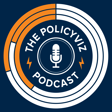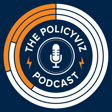
Public Art and Data Intersect with Ellie Balk
Ellie Balk is an artist obsessed with color, pattern, data and mathematics. She creates large scale data visualization public artworks using paint, glass, sound and most recently ceramics. Community engagement and interaction is at the core of her work.
Ellie lives in Brooklyn, while working internationally. Her public artwork can be experienced across the United State, extensively throughout New York City and St. Louis, Missouri and Internationally in Buenos Aires, Argentina, Mae Rim, Thailand in Saint Louis, Senegal and Marrakech, Morocco.
Ellie has worked with High schools students across the United States in creating public art that visualizes mathematics and her ideas have been adapted for use in elementary and high school mathematics curriculum. Her work developed with her teaching partner Tricia Stanley (Brooklyn) in Visualizing Mathematics has been published nationally and internationally through the Bridges Conference (Sweden) and the National Council of Teachers of Mathematics (Connecticut, Chicago, New Orleans).
She loves when she can use data as a tool to bring people together. Her visualization workshops have strengthened groups with the Kemper Museum (St. Louis), teams within Google (New York), KOC school (Istanbul, Turkey) and with the National Academy of Design (New York).
Ellie holds a Bachelors of Fine Art from Bowling Green State University in Ohio and a Masters of Fine Art from Pratt Institute.
Episode Notes
Ellie | Website | Instagram | Twitter
Related Episodes
Episode #232: Stefanie Posavec and Sonja Kuijpers
Episode #187: Stefanie Posavec & Miriam Quick
Episode #2: Dear Data
iTunesSpotifyStitcherTuneInGoogle PodcastsPolicyViz Newsletter

